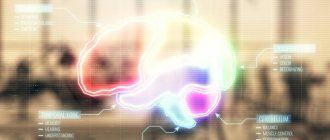Lethargy is a pathological condition that is a symptom of physiological or mental illness. It is manifested by such signs as: reduced reaction, protracted speech, slow flow of thoughts and movements. Sometimes the patient may involuntarily ignore the world around him and remain in a state of stupor for a long time.
When thinking is impaired, this symptom is called ideation, but if it manifests itself in speech, then it is motor.
Inhibited behavioral reactions of a person, as well as all mental processes occurring in the body, can be provoked by various reasons: diseases of a different nature; general fatigue; the action of tranquilizers that cause such a reaction; stressful conditions; apathy.
In medicine, this condition is noted as bradypsychia (many mistakenly assume apathy). However, this is a different disease with different mental and pathophysiological basis. Bradypsychia is often diagnosed in older people. But, it also occurs in young people, and there are reasons for this.
general characteristics
Retardation is a slowness of mental and physiological processes.
In the scientific community, the terms “bradypsychism” and “bradypsychia” are used to denote it. The most typical external signs are slow reactions, protracted speech, inability to engage in joint activities or communication that proceed at a normal pace. Inhibited people often remain alone, seem unsociable, withdrawn for no reason. The most severe variants of the disorder are observed with apathy and stupor, when patients do not respond to anything. There are three types of inhibition: ideational, motor and complex. The symptom is called ideatorial when slowness is most pronounced in speech and thinking. People show moderate or slightly weakened motor activity, but when trying to carry on a conversation, inhibition occurs - they do not have time to follow the progress of the conversation, track the change in topic, or answer the questions posed. Others get the impression that the thought process and speaking take a lot of energy from a person.
Motor retardation is manifested to a greater extent by slowing down movements. It is characterized by physical weakness, relaxed posture, and incoordination. People constantly feel the desire to lean on something stable, sit down or lie down. The decrease in speech rate is mild; communication difficulties arise only when conducting an intellectually complex or emotional conversation. With complex retardation, the mental and motor spheres suffer: patients speak quietly, with long pauses, move slowly or remain practically motionless.
Associated disorders
Bradypsychia is the result of damage to the central nervous system, which is responsible for brain activity. Depending on the element of the lesion, different types of disorders develop. These include:
- bradybasia - slow walking;
Bradykinesia is characteristic of parkinsonism - bradythymia - slow changes in emotions;
- bradykinesia - slow pace and limited range of movements;
- bradypraxia - slow direction of action;
- Bradylexia – slow reading;
- bradyphasia, bradyllalia is a slowdown in speech, at the same time it is almost always correct, observed both in adulthood and in childhood (bradylalia is often observed in patients recovering);
- Impaired articulation may also develop, and during a long conversation the person may become tired.
When bradypsychia is a consequence of Parkinson's disease, it is necessary to focus on the symptoms of the underlying pathological process. These include feelings of fatigue, anxiety, sleep disorders, etc.
Causes of lethargy
Many people are familiar with the condition when usual tasks seem overwhelming, there is a constant feeling of lack of time. Such mild periodic lethargy has physiological causes, for example, lack of sleep. It is short-lived and disappears on its own after proper rest. Less commonly, slowness of psychomotor reactions is pathological and develops as a symptom of a mental disorder, neurological disease or intoxication of the body. In such cases, people remain inhibited, regardless of fatigue, and require special treatment.
Physiological conditions
The reasons for a person’s slowness are the peculiarities of the functioning of his nervous system and situational factors, for example, leading to asthenia or reducing motivational and volitional abilities. Physiological factors of inhibition act constantly or periodically, but do not cause social and personal disadaptation: the person continues to lead his usual lifestyle, adjusting it to his slowness. Possible reasons of this type:
- Lack of sleep.
The body is unable to adapt to sleep deficiency. Its deficiency at night (for example, during insomnia) is always compensated for during the day by the development of drowsiness, absent-mindedness, and slowness. At the physiological level, inhibition processes in the brain predominate. After a sleepless night, lethargy occurs during the day, regardless of where the person is or what tasks he is solving. - Fatigue.
Slow reactions, weakness, and drowsiness are caused by the body’s need for rest. When reserves of mental and physical energy are depleted, the body turns on “saving mode.” Reducing the pace of all types of activity helps to waste the remaining strength more slowly. After a period of rest, the usual speed is restored. If this does not happen, chronic fatigue syndrome may develop. - Stress.
The reaction to stress is determined by the characteristics of nervous activity and can develop according to the type of inhibition or hyperactivity. Some people, in response to stress, become more active and restless, others show passivity and uncertainty. The second response option is called “rabbit stress” and is characterized by sudden disorganization and slowdown in activity. - Difficulty of the task.
The causes of selective inhibition are lack of skills, lack of knowledge to perform a specific activity. A person completes a task slowly or is completely inactive when the task is complex and incomprehensible. For example, a student at the blackboard looks sluggish because he missed the previous lesson or did not do his homework. - Reluctance to perform activities.
The speed of thinking decreases when it is necessary to perform a task that is subjectively assessed as uninteresting, insignificant, or meaningless. Achieving the final result is possible only through the application of volitional efforts, but they are not always enough. As a result, a person procrastinates, gets distracted, and puts off work for the future. - Phlegmatic temperament.
Congenital causes of slowness are the predominance of inhibition and inertia of the nervous system. People with such characteristics are called phlegmatic. They may seem inhibited, especially for those in whom excitation of the central nervous system dominates, and the speed of all processes is high. - Features of education.
Slowness, the predominance of inhibited personality traits may be the result of upbringing in a family with a measured, strict daily routine, and the lack of opportunity to demonstrate independence. In both cases, the child grows up dependent on his parents, unable to adapt to changing environmental conditions. Finding himself in an unfamiliar situation, he becomes confused, indecisive, and slow.
Somatic and mental illnesses
The implementation of mental operations and complex motor acts is ensured by the work of different parts of the brain. With organic and biochemical changes in the central nervous system, persistent severe lethargy may develop, regardless of lack of sleep, fatigue or situational reasons. It requires treatment; in combination with other symptoms of the disease, it disrupts a person’s social adaptation - it interferes with professional activities, and limits the ability to communicate with relatives and friends. The most common causes of pathological retardation:
- Vascular diseases of the brain.
Acute and chronic disorders of cerebral circulation lead to deterioration in the nutrition of brain cells and hypoxia. This negatively affects the speed of intellectual functions and focus of attention. Slowness and absent-mindedness are most typical for patients with atherosclerosis, hypertension, and vascular thrombosis. - Parkinson's disease.
One of the key symptoms of the disease is hypokinesia - a decrease in spontaneous physical activity. Patients can remain motionless for hours, their movements are constrained, unfold only after a pause, and are slow. Characterized by walking in small steps, a mask-like face, viscosity of thinking, and confusion of speech. - Epilepsy.
A decrease in the rate of mental processes occurs with an increase in epileptic dementia. The thinking of epileptics is viscous, stiff, and concrete. Speech is often impoverished and slow, but accelerated speech production with a large number of stereotypical repetitions and patterns is possible. Retardation manifests itself more in the intellectual sphere. - Schizophrenia.
Bradypsychia in schizophrenia is formed on the basis of emotional-volitional disturbances and poverty of motives. Patients are uninitiative and behave distantly. A slowdown in thinking is accompanied by a decrease in the speed of motor-speech activity and difficulties in verbalizing thoughts. Secondary causes of inhibition are intellectual defect, productive schizophrenic symptoms (delusions, hallucinations). - Depression.
Motor and mental retardation are included in the classic triad of symptoms of endogenous depression, but can also manifest themselves in other depressive disorders. In mild forms of the disease, lethargy, slowness, and stiffness of movements are observed. Severe depression can occur with stupor, mutism, and inability to respond to external stimuli. - Anxiety disorders.
With a high level of anxiety, a state of psychomotor retardation occurs. Patients pronounce each word with effort, as if overcoming an obstacle. The reasons are emotional overstrain, stiffness of thinking, concentration of attention on a disturbing situation. - Hypothyroidism.
Insufficiency of thyroid hormones reduces the rate of metabolic processes in the central nervous system. On the basis of this, a change occurs in the emotional sphere and cognitive abilities. Patients experience lethargy, apathy, and depression. They become slow, hypochondriac, and whiny. They perceive new information worse and remember it poorly.
Intoxication
Toxic poisoning of the body develops due to parasitic diseases, consumption of alcohol, drugs and medications. In most cases, there is a disturbance in the exchange of neurotransmitters in the central nervous system, which leads to a change in the speed of biochemical reactions and neural transmissions, which is manifested by an acceleration or deceleration of the pace of mental activity, inadequacy of emotions and behavior. Lethargy appears when the following substances enter the body:
- Opioids.
Mild intoxication has mild symptoms. With moderate poisoning, a person becomes complacent, sedentary, and lethargic. Due to the influx of dream-like fantasies, maintaining a conversation is difficult. Speech is quiet and unintelligible. Autonomic symptoms: constriction of the pupils, pale skin, dry mucous membranes, low blood pressure. - Sedatives, hypnotics.
Intoxication with these drugs is characterized by lethargy, drowsiness, and incoordination of movements. There is often instability of emotions with rapid transitions from laughter to crying. With mild poisoning, the mood rises, a feeling of joy develops, which is gradually replaced by anger and tearfulness. The average degree of intoxication is always accompanied by a slowdown in thinking, speech, and movements. - Cannabinoids.
The state of deranged intoxication occurs with a pathological change in the direction of thinking: it becomes illogical, inconsistent, incoherent. The pace is often accelerated, but sometimes pathological inhibition develops, which is manifested by a feeling of “freezing of thoughts”, an inability to comprehend what is happening. At the same time, the mood remains high. - Parasite toxins.
With chronic parasitic infestations, the nervous system is exposed to small doses of toxic substances for a long time. Poisoning develops, the main symptoms of which include fatigue, a feeling of overwork, and insomnia. Pediatric patients are often diagnosed with anemia; they look drowsy, apathetic, and lethargic.
Ways to solve the problem
The best option is to visit a good neurologist. Such a specialist will help you find out the real reasons for loss of concentration and suggest ways to eliminate them. It is also possible to correct the situation on your own, but only on the condition that we are not talking about any disease - here you cannot do without a specialist.
To strengthen your memory and increase concentration you need to:
- Adhere to the correct daily routine.
- Eat well.
- Drink enough water.
- Spend as little time as possible at the computer, with gadgets or in front of the TV.
- Take medications that improve concentration and memory. For example, Esprico vitamins are considered one of the best, containing 2 types of Omega-3, Omega-6, magnesium and zinc (by the way, they are available in our online pharmacy).
- If possible, avoid alcohol, smoking or using drugs.
- Be sure to play sports!
- Be in the fresh air for at least 1.5-2 hours a day.
- Every day, learn poetry or a foreign language by heart, play logic games.
At the same time, certain “exercises” should be performed. So, you should try to do ordinary things in an unusual way. For example, walking backwards for a while (you can do it at home, when no one sees you), brushing your teeth and combing your hair with your left hand if you are right-handed (and vice versa), going to work on a different route, etc. All this will give a powerful an impetus for the formation of new neural connections.
And remember that it is much easier to prevent the problem with the same lifestyle adjustments and regular intake of vitamins than to get rid of its consequences.
Diagnostics
Lethargy, fatigue, and weakness are common reasons for people turning to a neurologist. Less often, the initial examination is carried out by a therapist or psychiatrist. First, a clinical interview of the patient, observation and examination is carried out. In order to objectively confirm the presence of inhibition, a pathopsychological examination and psychophysiological tests are performed to determine the reaction rate. To clarify the diagnosis, instrumental studies of the brain and its vessels and blood tests for hormone levels may be prescribed. The standard diagnostic complex includes:
- Clinical conversation.
When interviewed, patients complain of slowness, memory impairment, and decreased intellectual abilities. They say that they have become worse able to cope with professional responsibilities and everyday affairs, and are unable to carry on a conversation. Possible additional symptoms are drowsiness, headaches, confusion. Children show moodiness, tearfulness for no particular reason, and lack of interest in games. - Observation.
When answering a doctor, patients often pause and drawl out their words. The voice is quiet, they speak unintelligibly, the question is answered after silence, so it may seem that auditory perception is impaired or it is difficult to understand the meaning of what was said. They are slow and passive in behavior. The movements are awkward and forced. - Study of thinking.
Pathopsychological tests are carried out to assess the speed of the thought process: an associative experiment, selection of antonym words, and others. The results indicate a slowdown in the pace of cognitive functions, a decrease in the number of ideas, and “getting stuck” on one thought. Intellectual activity is characterized by inertia and inactivity. - Determination of reaction rate.
When diagnosing retardation, psychophysiological methods are used that measure the reaction time to a stimulus (sound, light) and parallel changes in the bioelectrical activity of the brain, heart rate, and respiratory rate. With inhibition, a significant increase in the time of simple visual-motor and auditory-motor reactions, depression of the alpha rhythm on the EEG, and slowing of breathing are detected.
Diagnostic criteria and methods
People with speech rate disorders, including bradyllalia, need comprehensive medical, psychological and pedagogical diagnostics carried out by a specialized specialist. During the examination, the patient’s medical history should be studied in detail, which concerns previous illnesses and brain lesions, as well as the presence of disturbances in the rate of speech in relatives.
In certain situations, in order to find out the organic basis of the disease, it is necessary to conduct instrumental studies, including:
- electroencephalography;
- rheoencephalography;
- Magnetic resonance imaging;
- PET scan of the brain;
- Lumbar puncture.
The study of oral speech involves assessing the structure of the organs of articulation and the state of motor skills, expressive speech (pronunciation of sounds, syllables, words, tempo-rhythmic side, voice characteristics, etc.). Diagnostics of written speech involves performing tasks such as copying text, writing from dictation, and reading. In addition to a diagnostic examination of speech function, a study of general condition, manual motor skills, sensory functions, and intelligence is carried out.
When making a diagnosis, it is necessary to differentiate this disease from dysarthria and stuttering.
Treatment
The methods of primary therapy depend on the cause that provoked the inhibition. As part of the treatment program, various methods are used: drug correction, psychotherapy, targeted stimulation of intellectual functions and motor activity. All activities are aimed at restoring physiological brain processes responsible for the dynamics of psychomotor activity, as well as training mental and physical skills.
Taking medications
Drug therapy is prescribed to most patients and is aimed at improving the metabolism of nerve cells and tissues, protecting them from damaging factors, and slowing down death. Restoring active blood supply improves the functioning of various parts of the brain. As a result, mental activity is activated and symptoms of inhibition are reduced. Patients are advised to take neuroprotectors and nootropics.
Psychotherapy and psychocorrection
Psychocorrectional classes are aimed at increasing the speed of cognitive functions. They include exercises such as selection of associations, generalization of concepts, analysis of logical sequences, and solving intellectual problems. The correctness of the results and the speed of completing tasks are taken into account. During psychotherapeutic sessions, methods of social adaptation of a person with inhibition are mastered. The specialist gives recommendations on choosing a professional field, helps to master behavioral and speech skills that compensate for slowness.
Summing up
The prognosis is relatively favorable with an early start of correction and the presence of psychological causes of disorders of motor activity and speech motor skills. However, after regaining your skills, you should be observed by doctors for a long time and constantly independently monitor your movements and train of thoughts.
As preventive measures, damage to the central nervous system should be prevented, head injuries should be avoided, and asthenic syndrome should be detected in time.
Pathological inhibition of thinking involves various mental and pathophysiological disorders. This phenomenon should be qualified as a symptom that in most situations occurs in older people. But in certain cases, a similar problem can manifest itself in childhood and young people.
If you notice that your thinking processes are slow, you should immediately seek advice from a doctor. It is likely that this condition is the result of dangerous disruptions in the functioning of the central nervous system and requires special correction.
What are the dangers of schizophrenia?
First of all, you should know that this is a persistent mental disorder that occurs in a chronic form and is prone to progression. Schizophrenia is characterized by disorders that affect:
- cohesion of mental functions;
- thinking;
- emotionality;
- fading of spiritual energy.
Impaired thinking is the main symptom of schizophrenia. After the onset of the disease, the patient’s consciousness becomes divided. At some point it may be the same person as before, but within a few minutes everything can change dramatically. When exactly the change from a healthy personality to a sick one occurs is difficult to understand. In one body, or rather, his consciousness, lives the man himself and his illness.
A split in personality leads to the replacement of logical reasoning with delusional ideas. Focused thinking is lost, there is a lack of consistency, and jumping thoughts.
There may also be some symbolism and strict adherence to it. The patient himself comes up with a certain sequence of actions that will supposedly lead him to the desired goal. He is absolutely sure that you need to do exactly this and not otherwise, even if this means taking off your clothes in a public place or eating an inedible object. And any thing familiar to us from childhood can evoke completely unpredictable associations in the patient. His logical chains and conclusions are inaccessible to healthy people, including psychiatrists.
At the initial stage of the disease, confusion of thoughts is often present. In this case, the words are pronounced correctly and clearly, the sentences do not have grammatical errors, but it is absolutely impossible to understand what the patient is talking about. The text spoken by the patient has no meaning, no consistency, no purpose.
How to determine if you have depression?
Pathology may appear after experiencing stressful situations. If there is no disorder, after the problem is resolved, the person returns to a good mood. But when the cause has been eliminated, and the person continues to feel apathy, depression and loss of strength, it is necessary to seek help from a specialist. Performance may also decrease.
You can determine the presence of depression yourself, but you should not self-medicate even at an early stage of development. This should be done by a doctor, since self-medication can only make things worse.
Depression in women often occurs postpartum, as their lives change dramatically, and sleepless nights add to their fatigue. This is where breakdowns and apathy appear.
When the pathology is in an advanced form, a person experiences the following symptoms of depression - not only bad mood and impotence, but also persistent disorders of the nervous system. There are also symptoms such as: a significant decrease in self-esteem, maladjustment in society, despondency and loss of interest in any events.
Physiologically, appetite changes, intimate needs and energy decrease, sleep and intestinal functions are disturbed (constipation, weakness, fatigue during physical and intellectual stress are observed), pain in the body (in the heart, in the muscles, in the stomach).
The patient exhibits signs of depression such as loss of interest in other people, a tendency to frequent solitude, refusal of entertainment, use of alcohol and psychotropic substances.
Mental signs of depression include difficulty concentrating, concentrating, making decisions, slowness of thinking, a pessimistic view of the future with a lack of perspective and thoughts about the meaninglessness of one's existence, suicide attempts, due to one's uselessness, helplessness, and insignificance.
Transformation of consciousness
Delusions and hallucinatory experiences are integral manifestations of schizophrenia. These also include pseudohallucinations. These are false auditory perceptions of a strange nature. The voices that the patient hears, in his opinion, can come either from the head or from any other organ - arms, legs or stomach.
A schizophrenic cannot escape the feeling of the presence in the body of something unpleasant, forcefully imposed. He can engage in a discussion, ask questions, or argue about anything with this voice. At the same time, the audible voice, as the patient claims, does the same. The continued development of the disease is characterized by the addition of delusional ideas to hallucinations.
Delusional formation comes in various directions:
- delusion of persecution - the belief that someone is following a person or is constantly watching him;
- delusion of relationships - a strong belief that everything happening around them is directly related to the patient;
- delusion of influence - a person thinks that someone is directing his thoughts, and he cannot control them on his own;
- delusion of special meaning - a belief in one’s own greatness, power, or possession of unique abilities.
As schizophrenia develops, a condition called emotional-volitional defect occurs. It gives rise to a lack of strong-willed qualities and complete indifference to the world around us. Habitual everyday tasks that every person performs every day, without even thinking, are a real feat for a schizophrenic. He cannot bring himself to do such simple things as:
- brush your teeth;
- wash your hair;
- cook food;
- go to the shop;
- do basic cleaning of the apartment.
The emotional sphere of the patient suffers. This is expressed by the loss of the ability to show tenderness, affection, sympathy, affection, tact, and frugality. Such a person changes noticeably, he becomes tough, indifferent and cold, and sometimes even cruel. Sometimes this can even manifest itself in aggressive attacks. Relationships with loved ones change for the worse because they do not understand his condition.
Oneiric state (“waking dream”)
This symptom is associated with an influx of vivid hallucinations, most often with fabulous, impossible and even absurd content. The patient sees all these images and pictures, but, unlike delirium
, maintains the position of an external observer and does not actively participate in the “action”.
At the same time, the patient’s orientation in space and understanding of his own personality are disrupted. The memory of illusions is partially preserved. This symptom often occurs with congenital heart disease and certain types of infections.
Influence of external factors
Since most forms of schizophrenia begin in adolescence, it is worth thinking about the extent of exposure to various external stimuli. At 15–18 years old, the child’s psyche is not yet fully formed. It is during this period that teenagers strive to try something new, to feel feelings that they have not experienced before. We are talking about alcohol, drugs and other substances that affect clarity of consciousness.
Of course, drug addiction, smoking or alcoholism cannot be the cause of the development of schizophrenia, but if such a predisposition is inherent at the genetic level, these factors give impetus to speed up the process. When using drugs, the line between real events and illusion is lost. If this is done regularly, irreversible changes in brain activity occur.
Stressful situations can also affect the formation of schizophrenic disorders. Since each person perceives this or that emotional shock differently, it is impossible to predict in advance what exactly will cause the development of a mental disorder.








